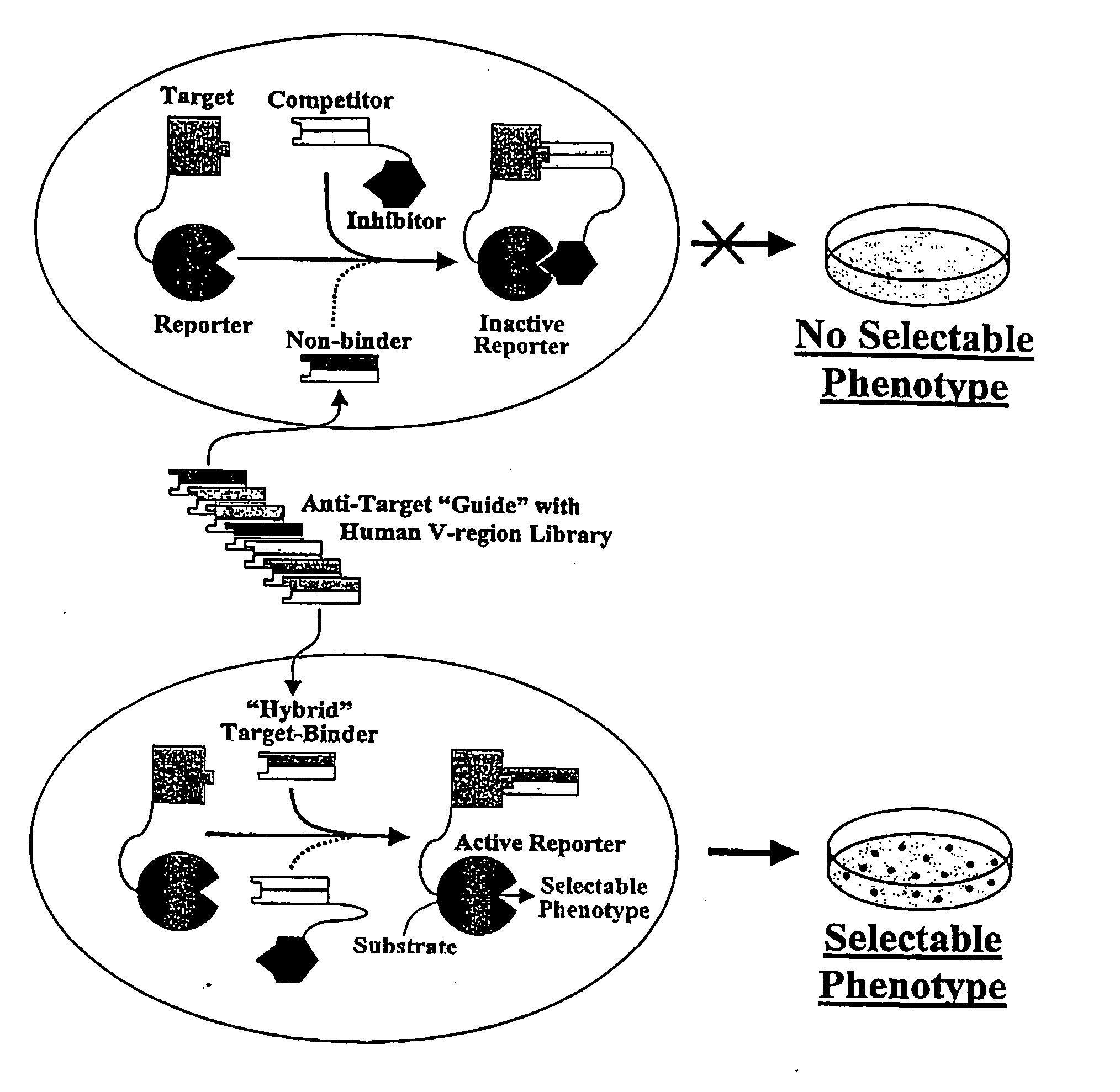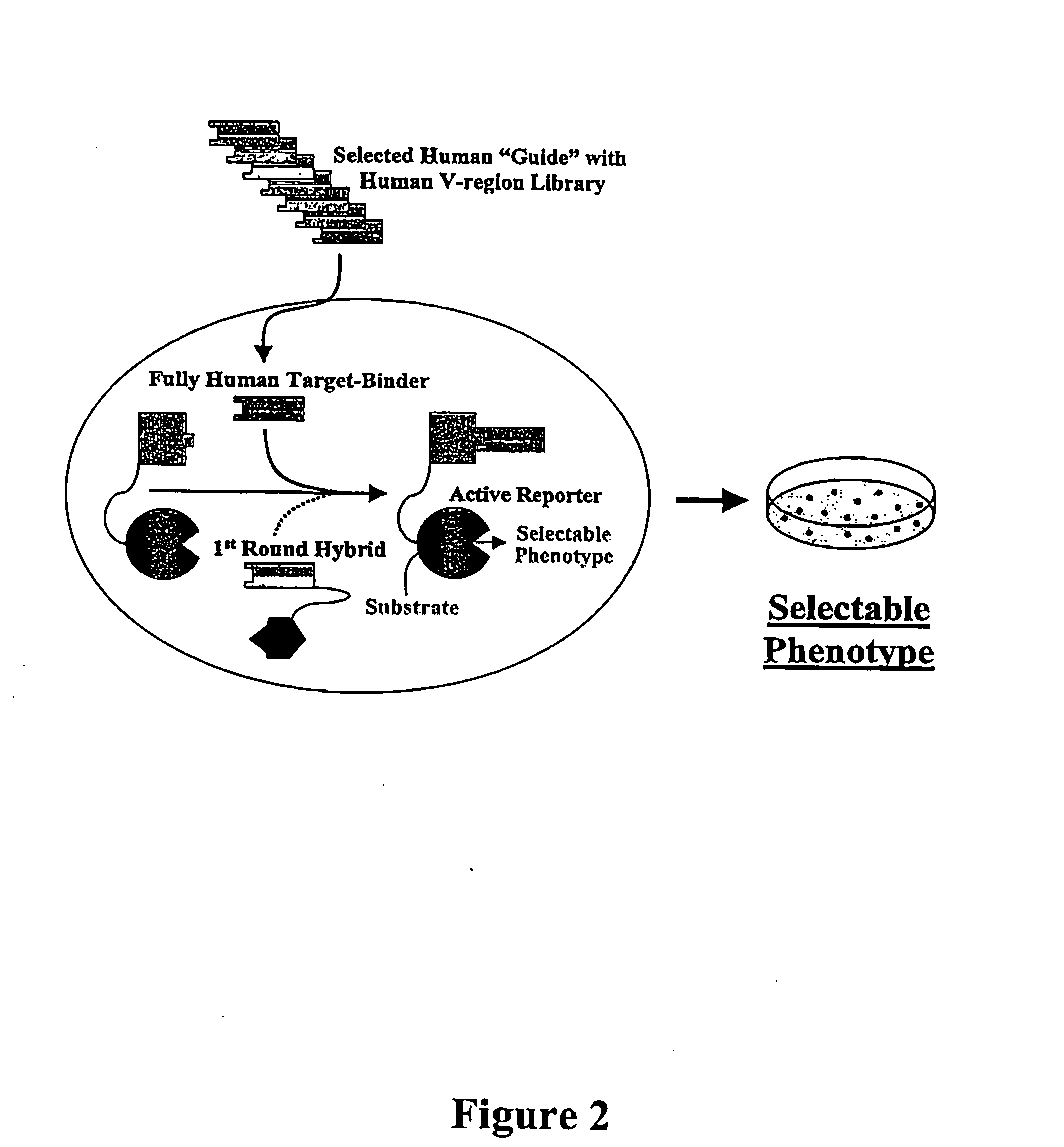Antibody affinity engineering by serial epitope-guided complementarity replacement
- Summary
- Abstract
- Description
- Claims
- Application Information
AI Technical Summary
Benefits of technology
Problems solved by technology
Method used
Image
Examples
example 1
Conversion of a Mouse Anti-CD40 Antibody to a Higher Affinity Human Idiolog
[0166] This example demonstrates the utility of the invention for conversion of non-human antibodies to human idiologs which bind precisely the same epitope, and with comparable or higher affinity. The V-regions of a murine monoclonal antibody, designated HB08, that binds to human CD40 antigen, were replaced by human V-regions to create a fully human Fab which bound the same epitope with comparable affinity. The docking of BLIP to β-lactamase by the binding of a Fab to the 13.5 kDa extra-cellular domain of human CD40 is illustrated in FIG. 6. The variable region coding sequences of HB08 were recovered from a hybridoma cell line by RT-PCR using commercial primers for the consensus sequences of murine VH and VL framework 1 framework 4 regions, respectively (Pharmacia Corp.; Larrick and Balint, 1994, in Antibody Techniques, Malik and Lillehoj, Eds., Academic Press, New York, pp. 103-114). After sequencing, the ...
PUM
| Property | Measurement | Unit |
|---|---|---|
| Stability | aaaaa | aaaaa |
| Affinity | aaaaa | aaaaa |
Abstract
Description
Claims
Application Information
 Login to View More
Login to View More - R&D
- Intellectual Property
- Life Sciences
- Materials
- Tech Scout
- Unparalleled Data Quality
- Higher Quality Content
- 60% Fewer Hallucinations
Browse by: Latest US Patents, China's latest patents, Technical Efficacy Thesaurus, Application Domain, Technology Topic, Popular Technical Reports.
© 2025 PatSnap. All rights reserved.Legal|Privacy policy|Modern Slavery Act Transparency Statement|Sitemap|About US| Contact US: help@patsnap.com



